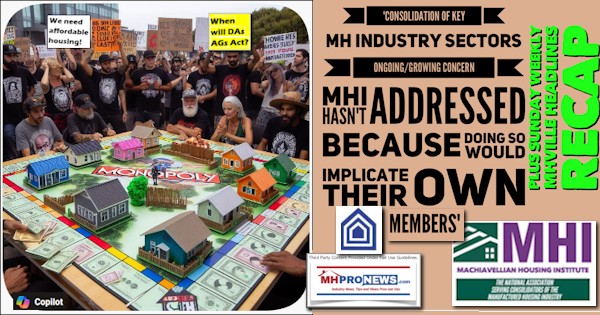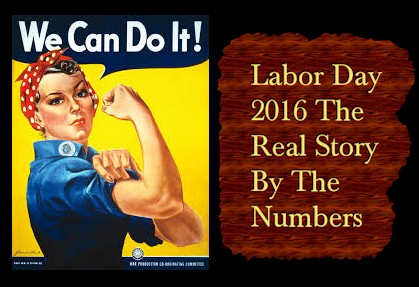
As it’s owners, managers, policy wonks, investors and working professionals who are the largest likely group of readers of MHProNews, it’s useful on this Labor Day to think beyond the celebration and the paid federal holiday, and look at what’s happening to labor in the United States. Because much of that labor is, or ought to be, a big target audience for manufactured and modular home marketing and sales efforts.
So labor’s future, is in a very real sense, is the future of the housing business too.
MarketWatch says that only 151,000 jobs were created last month, below the 170,000 forecast.
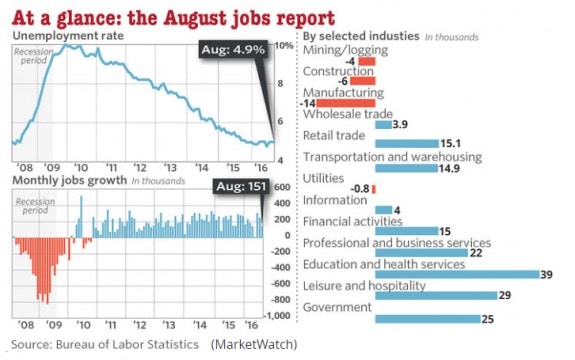
Politicians in both major parties have politicized the unemployment rate, which is officially at 4.9%, but which the lowest labor force participation rate in decades belies.
So the true unemployment rate is far higher, as Bernie Sanders and Donald Trump liked to point out earlier in the year.
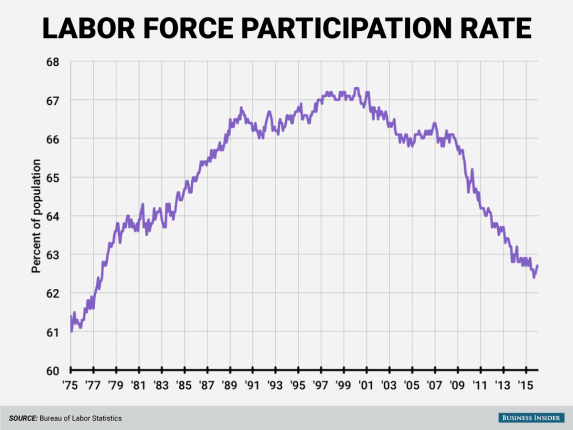
With labor force participation at historic lows, that clearly impliest that the programs and plans at the federal level – touted to “create jobs” – are not helping those unemployed at a sufficient rate to absorb the people graduating or leaving high school and college who are entering the labor force.
A shocking factoid is that if Texas was removed from job creation, the U.S. would have a net loss of job creation under President Obama.
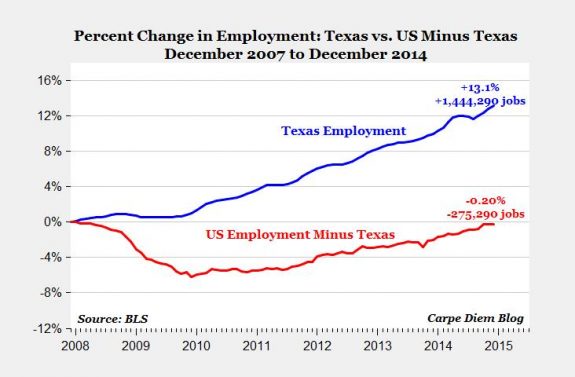
The challenges for older workers has been the subject of years of mainstream media reports.
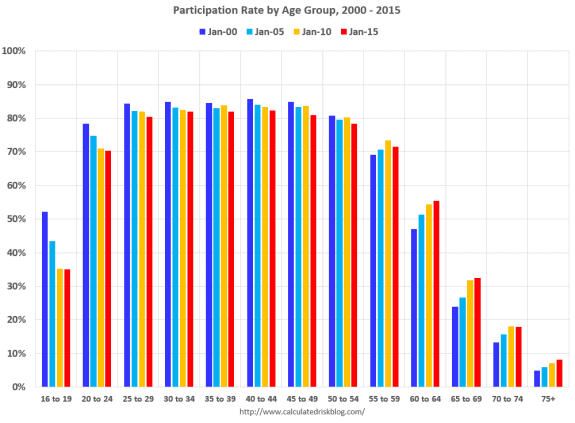
The home ownership rate is at its lowest point in decades. Is that a surprise when labor force partcipation is low, and inflation adjusted wages are actually shrinking in the past 7.5 years? All while the cost of rental housing is rising rapidly? Lower home sales naturally means more demand for rentals, which with rising rents and lower net incomes, trap millions in those rentals.
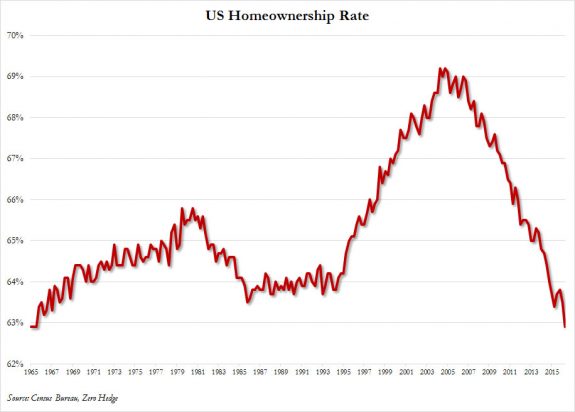
That’s the essence of the affordable housing crisis. See two different looks at the affordable housing crisis, linked here and the 2016 GAP report, linked here.
Tragedies and Poor Numbers, With the Right Policies, Under-tapped MH Opportunities in Disguse?
Hundreds of thousands of our fellow citizens in coastal areas or Louisiana are waking up in places that are not their place, or are without power, due to weather related events.
After trillions in federal spending since President Lyndon Baines Johnson launched his War on Poverty in 1964, the poverty rate is essentially unchanged after 50+ years.
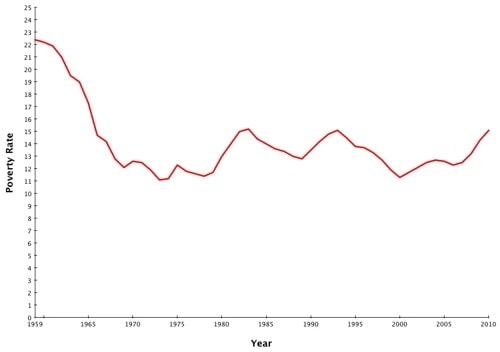
Yet the federal debt has ballooned to some $19.5 trillion, roughly half of which has been added during the Obama Administration years. While President Obama is the undisputed deficits-which-leads-to-higher-debts king in U.S. presidential history, the fact remains that the federal debt has risen under both Democratic and Republican presidents.
As the 2nd chart below reveals, higher debts hurt incomes and job creation too.
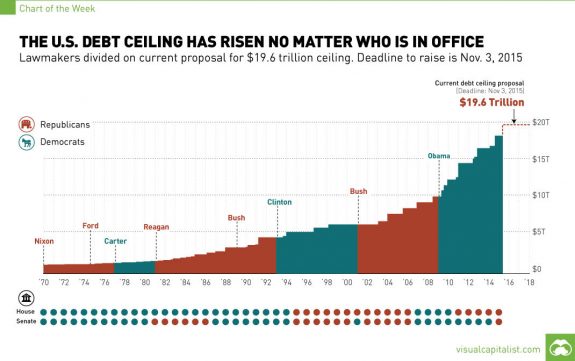
We won’t go into tax or regulatory policy in this article, beyond noting that both regulations and taxes kill jobs prospects (for details, see two recent articles, linked here and here).
In summary, the economy is where it is due in large part to political policies.
At the state level, without doing a deep dive, in recent history, it is Republican run ‘red states’ that tend to do better fiscally. Lower taxes and lower regulations naturally results in more job creation. But state policies – while helpful – can’t alone counter damaging federal tax and regulatory policies.
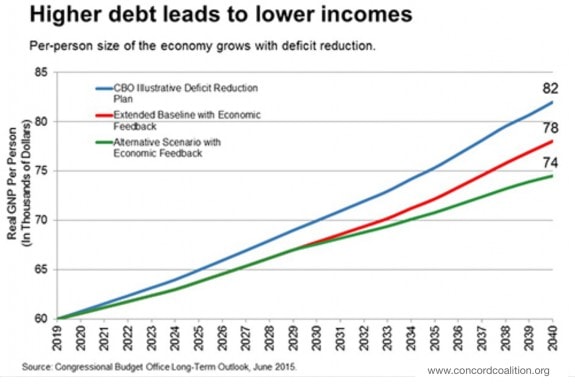
So federal policies may help or harm, but the more productive states like Texas tend to be those that have a favorable business climate (i.e: lower taxes, more reasonable regulations, etc.).
That lower taxes, lower regulations lesson ought to guide federal policies too. Under both the current and prior administrations (roughly 15.5 years), regulatory burdens have skyrocketed, as has debt. Those actions all tend to choke off U.S. job creation, push manufacturing off-shore, etc.
Beyond Rock and Bomb Throwing, the right or the wrong…Policies
For the next few moments, look past the allegations of corruption or breaches of the handling of classified documents by the Clintons. Look beyond the Clinton Campaign’s strategy to demonize Donald Trump as a racist, misogynist and nuclear-trigger happy madman (though his long time friends, former dates and employees routinely say differently). Voters have to sort out what those politically-driven allegations mean to them in the real world.
But instead of button-pushing, emotional issues, let’s look at the facts.
What is certain is that in terms of policy, that the Clinton campaign has doubled down on President Obama’s policies. She has said so. And while the president remains personally popular, interestingly, the polls suggest that the majority of the nation believes it’s heading down the wrong path in economic and foreign affairs.
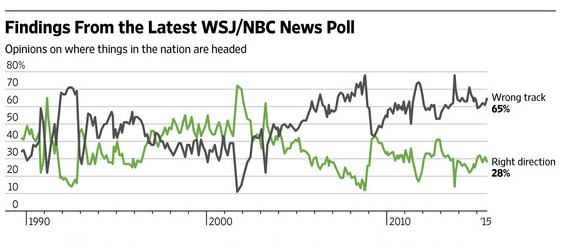
In theory, manufactured housing can thrive in good or bad economic times, because we produce and provide a more affordable home.
But the broad lack among housing seekers of a proper understanding about the true quality and value of modern manufactured housing (MH) has hurt our industry. Our industry’s products and services, are often an afterthought for most housing seekers.
Who says so? Its like a list of who’s who in the MH Industry.
Previous MHI President Chris Steinbert said so (see link here), as have MH legends such as Randy Rowe, Drew’s rock star Leigh Abrams.
Sunshine’s CEO John Bostick (“you can have results or excuses, not both”…) and a host of others MHProNews has interviewed and reported on have made the point that the industry must address its image issue via education and good marketing.
Rapidly growing UMH’s CEO Sam Landy has stated that marketing and image are first and foremost the job of each company in their own markets. Each of these and dozens of other pros have said that image, perception and education are keys to unlocking more sales. Giant Clayton Homes has been doing their own MH image and educational campaign for some years now. So image and education are critical factors in unlocking future sales.
But the state of labor and the state of the economy greatly impacts our core MH buyers too.
The above is the snapshot of the nation and its impact on our MH industry on this Labor Day, 2016. For those with jobs, be grateful. To help more get jobs and become home owners, the logical conclusion is that wise policy changes must take place in Washington, DC.
The industry must also adapt, to tap into opportunities that could lead us to record sales of new manufactured homes. ##
(Most image credits are as shown, top image credit is World War II poster of Rosie the Riveter, image credit, Wikipedia.)

Submitted by L. A. “Tony” Kovach, for Daily Business News, MHProNews.






